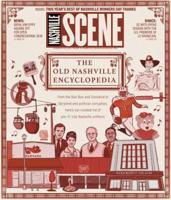A former child prodigy and U.S. fiddle champion, Mark O’Connor is arguably the world’s most gifted bluegrass virtuoso. How else do you describe an artist who, at age 20, was already receiving gushing fan letters from the likes of Chet Atkins?
Yet to mention bluegrass is to scratch only the surface of O’Connor’s multifaceted career. A protégé of Stéphane Grappelli, O’Connor is an accomplished jazz violinist, a skill that’s apparent to anyone who has listened to him perform with his Hot Swing Trio. He’s also endowed with some pretty convincing classical chops, which will be on display this weekend when O’Connor performs his Double Concerto for Violin and Cello (For the Heroes) with the Nashville Symphony Orchestra at Schermerhorn Symphony Center.
“I have to give the Nashville Symphony a lot of credit for helping me establish my classical career,” says O’Connor, who spoke recently by phone from New York City. “The symphony co-commissioned my Fiddle Concerto, which got me started, and it’s taken my Double Concerto (actually a different concerto for two violins) on tour. So this is an orchestra that understands my music.”
O’Connor’s Double Concerto was born in a moment of crisis. Just weeks after the 9/11 terrorist attacks, O’Connor went on tour to perform his concerto The American Seasons with a group of Juilliard School string students. At the time, many Americans were hunkering down and refusing to travel, but not one of the Juilliard students missed the tour. They were, in O’Connor’s opinion, acting like heroes.
“My first response was this incredible optimism,” says O’Connor. “The heroes were all these people who were leading our communities out of being afraid.” In his eloquent program notes, O’Connor added, “During those times when some people thought the world was falling apart around them, it was the celebration of the enduring human spirit that ended up influencing me the most profoundly. For that reason, Double Concerto for Violin and Cello is for the heroes.”
Double Concerto may be for the heroes, but it is not a crass and obvious sort of Rambo-like heroism that concerns O’Connor. The concerto opens with a playful solo violin tune in the bright and optimistic key of D major, and it soon joins the cello in lively and conversational give and take. We don’t hear anything suggesting traditional heroism until the big orchestral climax—with its final resounding hammer blows on the pedal tone D.
O’Connor describes the second movement as a country waltz, which seems appropriate coming from a composer whose most famous piece is a ditty called “Appalachia Waltz.” The work ends with a galloping virtuoso romp.
“What’s nice about a double concerto is the conversation becomes a little more involved, because you have the close interplay between the two soloists,” O’Connor says. “There’s a very intimate conversation between the violin and cello, and then there’s a much broader back and forth between the two soloists and orchestra, which is more traditional in what people expect from a concerto performance. It’s wonderful that I can make the setting of 90 musicians be very big on one level, and then have the intimacy of the interplay of the two soloists be very chamber music-like. To accomplish both of those things at the same time was one of the technical goals of the piece.”
One thing O’Connor doesn’t mention about his concerto is that it’s what you call “performer’s music.” It’s a dazzling and idiomatic piece, the kind of music that virtuosos from Paganini and Liszt to Rachmaninoff and O’Connor have always written.
Like the great performing composers of the past, O’Connor also got his start as a prodigy. Born in Seattle in 1961, he began studying fiddle, guitar and mandolin as a child and quickly achieved proficiency on all three. Because of the influence of legendary folk fiddle player Benny Thomasson, O’Connor began to focus on fiddle at age 11, and within three years had won three national championships. As a teen, he was also greatly influenced by Grappelli, the jazz master.
“When I was growing up, the composers who mattered the most to me where those who invented things, and I wanted to do that with violin,” says O’Connor. “So I purposely did not set out on a career path modeled on Grappelli or Thomasson. I went to Nashville.”
O’Connor devoted his apprentice years in Nashville to doing session work. They were years well spent. He emerged with immense skill and connections with everyone in the business—one of his early Nashville colleagues was bassist Edgar Meyer, who later joined O’Connor and cellist Yo-Yo Ma on 1996’s vastly influential Appalachia Waltz CD.
By the time he set out on his Appalachian journey, O’Connor had already received every accolade and award available to a fiddle player. Ultimately, success provided him with his biggest epiphany.
“I realized that the goal wasn’t the awards and success,” he says. “The goal was the journey itself.”




